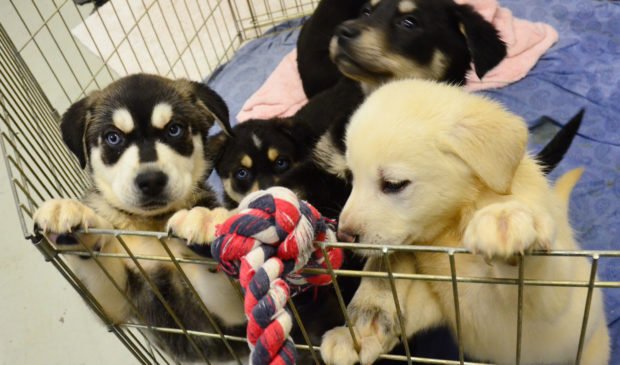Spay and neuter proposal continues to simmer
Thursday, August 25, 2016 by
Elizabeth Pagano The City Council Health and Human Services Committee took a look at the results of a survey on Tuesday that asked whether a spay/neuter initiative could help reduce animal intake for local shelters, but it is holding off on a recommendation for the time being.
“Individuals are saying that they are being turned away from the shelter when they attempt to bring a dog in that they have rescued – or for whatever reasons they need to relinquish control,” said Council Member Ora Houston. “The issue is that the stray population … we need to do something other than education to control that intake.”
“This is a growing concern in this community. The fact is that we are a world-recognized no-kill city, but if we don’t take action to stop the intakes into all of our shelters, there’s no way we can build our way out of this,” said Houston.
Houston billed Tuesday’s conversation as an opportunity to explore ways to reduce intake numbers and to provide a venue to hear the results of “an informal pilot survey” conducted by Chief Animal Officer Tawny Hammond.
Currently, city code states that “the city manager or the manager of an animal shelter may sterilize an animal if it has been impounded two or more times.”
Hammond explained that in March, the Animal Advisory Commission contemplated changing the city code to implement spay/neuter on first impoundment. At that time, Hammond asked for time to survey those who had declined the procedure from the city in order to better inform her recommendation.
Though that survey will not be complete until next month, Hammond reported on the findings so far to the committee. She said that 96 owners had declined to have their pet spayed or neutered on first impound over the past five months. During that time, about 6,000 dogs had come into the system, with 198 “leaving unaltered.”
Of that population, Hammond said that about half of those had left unaltered because: a) they were under quarantine; b) the shelter could not arrange to have the animal placed on the surgery schedule in a timely manner (the pet received a voucher instead); or c) the animal was too sick or elderly to undergo surgery safely.
Among the 96 survey respondents who declined the surgery, 36 percent said they were planning to breed their pets, 19 percent cited age or medical reasons, 15 percent said they wanted their pet back immediately and 36 percent had other reasons for declining. “Most commonly,” said Hammond, “they did not want to do a surgery.”
Though many speakers argued in favor of implementing some type of spay/neuter program, not everyone was ready to move forward with an ordinance just yet.
David Lundstedt, who serves as chair of the Animal Advisory Commission, explained that the commission had helped initiate the six-month survey that is scheduled for completion in September. He asked the committee to table the item until commissioners had had time to examine the survey’s results and re-examine the possibility of spay and neuter on first impoundment.
Fellow Commissioner Kristen Kjellberg echoed Lundstedt’s request. “There’s already been some spirited discussion, and there will continue to be more after the survey results have been published,” she said. “The City Council and the mayor chose the Animal Advisory Commission for their expertise. … It’s something that we’ve taken on, and I would hate for that hard work to be lost already.”
Noting that there were risks involved with the surgery, as well as risks with an elective surgery being performed by someone other than an animal’s regular veterinarian, Kjellberg urged caution.
“This is not something that should be taken lightly,” she said. “This is something that should really be taken a look at, and we’ve already started that process.”
In the end, committee members opted to hold off on a recommendation until October, when the recommendation from the commission and Hammond’s survey would be complete. Hammond also promised that, at that time, she would provide information on fiscal considerations, historical data and statistics, “as well as what truly (are) the challenges that we are facing now.”
“I think there’s perception, and there’s truly why we return animals,” said Hammond. “I don’t have an opinion yet, … but I’m listening.”
Photo by James Brooks made available through a Creative Commons license.
The Austin Monitor’s work is made possible by donations from the community. Though our reporting covers donors from time to time, we are careful to keep business and editorial efforts separate while maintaining transparency. A complete list of donors is available here, and our code of ethics is explained here.
You're a community leader
And we’re honored you look to us for serious, in-depth news. You know a strong community needs local and dedicated watchdog reporting. We’re here for you and that won’t change. Now will you take the powerful next step and support our nonprofit news organization?










